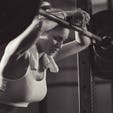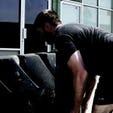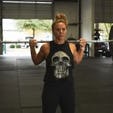When it comes to the ultimate test of productive, functional fitness, there’s nothing quite like hiking a half-marathon (or more) in the mountains with a heavy pack, taking into account scent control, playing the wind, and your concealment and camoflauge, and then killing an animal to provide for yourself or your family with a weapon that often requires you to be as close as 20 yards, then packing that animal out in an even heavier pack.
Whether it’s dragging over 100 pounds of meat out of the mountains, drawing an 60-80 pound bow multiple times as you practice shooting and target accuracy, or learning how to move at lightning speed and then get your heart rate down fast, bowhunting is simply tough stuff.
Whether you’re interested in hunting or not, you’re about to discover every physical skill you need to become a strong, resilient, talented predator who can survive in extreme situations that require the ultimate combination of strength, stamina, resilience and the ability to remain calm under stress.
![Onnit Battle Ropes]() 1. Heart Rate & Nervous System Control
1. Heart Rate & Nervous System Control
When bowhunting, you’ll often find yourself completely gassed from having crested a steep hill or navigated through unforgiving terrain, only to find yourself in a situation where you have the opportunity to take a shot. Unless you have the ability to – just like a sniper – get your heart rate down fast and consciously control your nervous system, you’re not going to be successful in this situation.
So how can you learn the skill of being able to get your heart rate down fast? Here are a few practical strategies you can include in your lifestyle and next workouts:
- Use Heart Rate Variability (HRV) training: HRV measurement and training is a perfect way to measure if the interplay between your central nervous system and your heart are in a state of coherent interaction, and if not, to learn how to fix that. Here’s how to do it: every morning for 5 minutes (before you get out of bed) lay quietly and measure your heart rate variability, heart rate and respiration.
If your HRV is low, or your heart rate and respiraton are high, then I recommend you do either A) box breathing (4 count in, 4 count hold, 4 count out, 4 count hold) or B) alternate nostril breathing (in through the left nostril, out through the right, then in through the right, out through the left) or C) quick coherence technique until you can consciously get your HRV up and your heart rate down. Click here for an article I recently wrote that teaches you about the app and heart rate monitor you need to practice this tactic.
- Jack up your heart rate and then engage in a fine motor skill activity. This one is a no-brainer to figure out, and my go-to exercise is 15 burpees and/or a 100 yard hill sprint followed by shooting 3 arrows as accurately as possible. If you don’t shoot, you can try this same technique at your gym by, for example, cranking out a series of burpees and/or sprints then doing activities such as shooting a basketball, balancing on one leg on a half foam roller, throwing a tennis ball against the wall and catching it, or any other activity that requires finer motor skills.
- Do the burpee efficiency test. Once per week, wear a heart rate monitor, then attempt to do as many burpees as you can for 5 minutes. But here’s the trick: every time your heart rate reaches within 20 beats of your maximum heart rate, you have to stop until the heart rate goes back down below that point (your maximum heart rate is approximately 220-your age). Your goal is to increase the number of burpees you can do in 5 minutes by at least 2 reps every week.
2. Upper Back Strength & Thoracic Mobility
It can be no easy task to quickly and efficiently draw a bow that’s been strung with sufficient weight to actually shoot far and fast. For example, I find drawing my bow to be pretty close to the equivalent of a strict bent over dumbbell single arm row with around 50 pounds.
If I can’t pull clean and quiet, and instead have to cheat, strain, grunt and wiggle around to row that dumbbell, then I’ll be doing all those same unnecessary movements when drawing my bow in the field, and those movements don’t go unnoticed by wild animals. A strong upper back, good pulling muscles and shoulder retractors and optimized thoracic spine mobility are key for this, and here are some practical ways to get all of the above:
- Grease the groove with a pull-up bar. Get a pull-up bar, preferably the type you can install in your office door or home, and crank out 3-5 pull-ups every time you walk under the bar. As a former swimmer with rotator cuff overuse issues, I found that this one change to my home office strengthened my shoulders, rotator cuff and upper back to the point where my shoulder pain totally disappeared, as did the propensity of my shoulders to be in a nasty “rolled forward” position from hours of time spent working over my tiny laptop.
- At the gym, pull 2x more than you push. Most athletes find it easy to do bench pressing, push-ups, and overhead presses until the cows come home, but simply grimace at the prospect of doing the same volume of rows, pull-ups, pull-downs and deadlifts. But when you’re spending the majority of your time hunched over a keyboard, wrapped over a steering wheel, and sitting in a chair, you actually need to be using your shoulder retractors and pulling muscles more than your pushing muscles. For this reason, one of my “rules” when I put together a gym workout is that I A) do twice as many pulling exercises as pushing exercise; B) ensure that during pushing exercises, you’re still using pulling muscles (e.g. keeping your shoulder blades activated when doing a push-up or bench press, squeezing your shoulder blades back at the top of a deadlift, doing strict pull-ups than kipping or butterfly pull-ups).
- Do mobility work on the thoracic spine. When it comes to shoulder mobility and strength, one of the biggest detractors is a lack of thoracic mobility, which happens when you’re in many of the sitting and hunched over positions I’ve already described. For this reason, a crucial part of your mobility toolbox should be a couple of lacrosse balls that you duct tape together to form a deep tissue massage device that you can run up and down your middle back as you sit in a sit-up/crunch position on the floor. Here are some excellent thoracic mobility resources on the MobilityWOD website that shows this and much more.
- Try a standing workstation. When you stand, your shoulders tend to stay far more activated compared to when you’re hunched over in a chair. While resources abound for sitting less and standing more, and while you can opt for a box or a few books to elevate your computer on your current normal desk, if you want get a treadmill desk or official stand-up desk, my article How To Turn Your Desk Into A Calorie-Decimating Workstation is a good place to start.
3. Accuracy & Vision Enhancement
You also need to have good eyes to hunt, to shoot, or even to do things like the spear throw and rope swing in obstacle course races, but sadly, new studies like this show that myopia and short-sightedness are growing by leaps and bounds as we grow up in a culture primarily accustomed to only focusing the vision on smartphones and screens that are within a 1-3 foot vicinity of the face.
To have both accuracy and good vision, you must not only learn to take frequent screen breaks every 15-20 minutes to focus your eyes on distant objects on the horizon (trees, mountains, buildings, etc.), but you may also need to actually do exercises such as convergence and divergence to train your eyes, while also protecting your eyes from the ravages of poor nutrition and an industrialized lifestyle.
So here are some practical things you can do to increase your visual balance:
- Use blue light blocking glasses when on computer, and take breaks. I wrote about glare and blue light blocking strategies quite extensively in my article about how to beat insomnia and get a better night’s sleep. One of the best ways to destroy your visual system for life (in addition to extensively disrupting your sleep patterns) is to spend the day staring at a screen. If you ever feel dizziness, headache, lightheadedness, or twitching around your eyes, you’re probably straining your eyes too much. For the same reason, it’s important avoid small fonts and reading in rooms with low amounts of light. Fortunately, there are a number of apps that remind you to briefly stop working, or to focus your vision elsewhere, like Awareness, WorkRave, Time Out, and ProtectYourVision. You can also simply follow the the 20-20-20 rule, which says that for every 20 minutes you spend staring at the computer, you should spend 20 seconds looking at objects about 20 feet away.
- Frequently play sports that requires eye tracking. Let’s face it – about the most complex visual exercise that many athletes get is looking around while riding a bike or checking out the eye candy at the gym. But eye tracking activities that actually build, train or maintain eye muscle activity are few and far between. This is why cross-training sports such as soccer, golf, tennis, basketball or even ping-pong aren’t only good for training the arm, leg and core muscles you’re not using, but also for keeping your eyes on top of their game.
- Sleep 7-8 hours per night. Sleep is extremely anabolic for your entire body, but it’s especially effective at relaxing your visual system and relieving strain on your eyes. If you’ve ever had mysterious twitch in your eye that just wouldn’t go away (a condition called myokymia), it was likely due to lack of sleep. Lack of sleep can also lead to ischemic optic neuropathy, which is damage to the optic nerve from lack of blood supply. Glaucoma is another condition that can result from lack of sleep, and can lead to complete loss of your valuable peripheral vision, as well as blindness. Read this article for some of my latest sleep enhancing biohacks.
- Try the Bates Method. If your visual system is really suffering, you may want to try something called The Bates Method. This method involves a series of eye exercises designed to strengthen the muscles in the eye but also to strengthen the mental connection between the brain and the eye, and many individuals with poor vision have found that with practice, glasses and contact lenses become unnecessary.
- Use “The Vision Gym”. The smart folks over at Z-Health have developed a program called “The Vision Gym”. This is an online program that teaches you simple 10 minute eye exercises to enhance advanced visual acuity skills such as depth perception, peripheral range, saccadic movement (how fast and accurately your eyes move when you read or scan), visual acuity and color and contrast discrimination. It’s basically a “modernized” version of the Bates Method and is the top program I would personally implement prior to turning to optometric correction if my vision ever begins to fail.
- Eat for your eyes. Two very important eye nutrients that may both improve vision and reduce your risk for macular degeneration and cataracts are lutein (LOO-teen) and zeaxanthin (zee-ah-ZAN-thin), two types of carotenoids that are yellow to red pigments found widely in vegetables and other plants. In nature, lutein and zeaxanthin appear to absorb excess light energy to prevent damage to plants from too much sunlight, especially from high-energy blue light rays (same as you get exposed to from computer screens and smartphones) Cooked spinach and cooked kale are some of the best natural food sources of lutein and zeaxanthin, but any green leafy vegetables or yellow vegetables will do. The best non-vegetable sources of lutein and zeaxanthin include fish and egg yolks.
4. Grip Strength
While a good grip is correlated with everything from fewer low back injuries to higher testosterone, it also ensures that your forearm muscles are up to par for both drawing a bow and also for packing and dragging heavy objects. As a guy who races plenty of Spartans and obstacle racing events that include sandbag carries, rope climbs and sled drags, I’ve had to work on grip strength quite a bit, and some of my top fitness tips for grip include:
- Do cinderblock carries. Cinderblocks are something you can find for free or cheap, and these work your “pinch” grip (pinch and carrying rubber weight plates can work just as well). Simply carry one cinderblocks in each hand with a pinch grip until you can’t carry it anymore. For a double-whammy, attach chains to each cinderblock and once your grip goes, throw the chains over your shoulders and drag the cinderblocks as fast as you can.
- Do tire drags. You can find old, big, heavy tires for free at most tire stores. Rather than simply doing the stereotypical “tire flip”, you can also simply bend down, get your butt out behind, grip the edge of the tire, and drag it backwards while holding on as tight as possible. This one works your grip strength, your cardiovascular endurance and your power.
- Use a battling rope. A tool like an Onnit Battle Rope can give you a challenging grip workout, along with a big cardio boost and (if you’re careful not to hunch forward) good thoracic mobility and shoulder stability work too. Simple grab one end of each rope, and do a rope wave, slamming each end of the rope into the ground as you alternate for anywhere from 20-60 seconds.
- Hang like an ape. Remember that pull-up bar you installed in the door of your office or a room in your house? Occasionally grab it and simply hang for as long as you can. For the ultimate in grip endurance, you should be able to work up to an unassisted hang of at least 5 minutes.
Finally, as your work on your heart rate and nervous system control, accuracy and vision enhancement, shoulder stability and thoracic mobility, and grip strength, be sure to remember that if you’re serious about getting into bowhunting (or any other form of hunting) there’s absolutely no substitute for simply putting on a heavy pack of anywhere from 20 to 70 pounds and rucking in the hills for several hours. Once you combine the strategies in this article with a challenging weekly hike like that, you’ll have the fitness skillset necessary for this challenge.
Do you have questions, comments or feedback about these 4 things you can learn from the ultimate sport of functional fitness? Do you think there’s an activity that’s better than bowhunting for developing your survival and strength skills? Leave your thoughts and comments below!
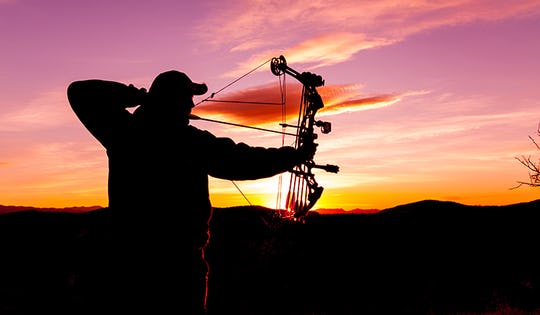

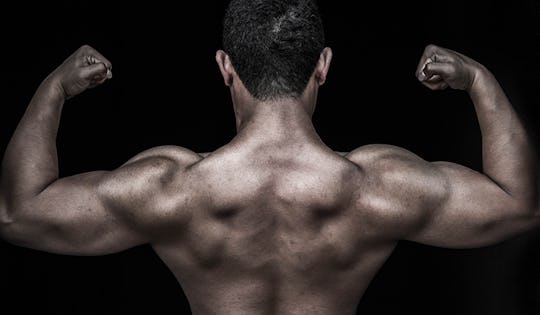

)
